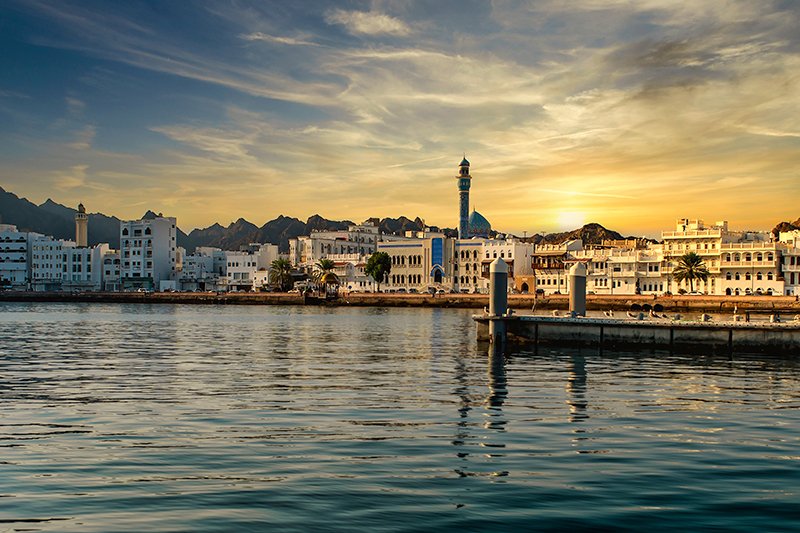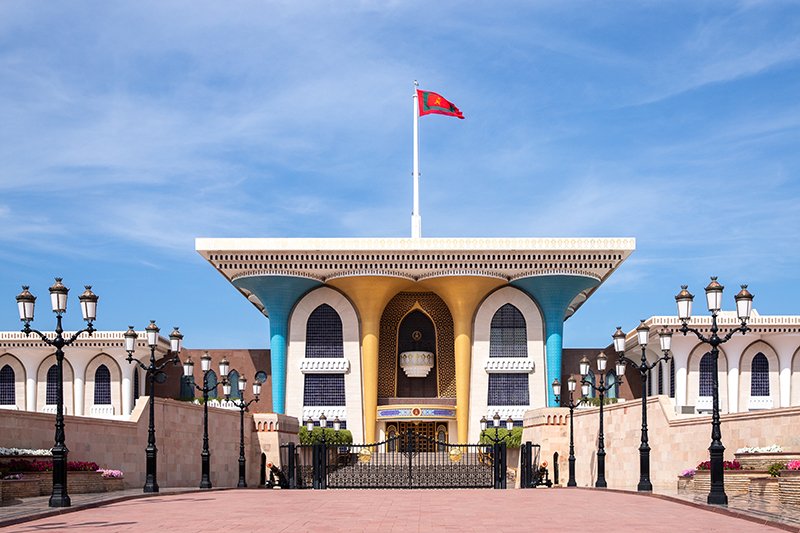Bow Down For The Beauty Of The Oldest Independent State’s Capital In The Arab World. We Challenge You To Pick A More Aesthetic Place, Than This One! It Also Gets You To Dive In! Quite Literally.
Sandwiched between the blue Gulf of Oman and the stark Al-Hajar Mountains, Muscat is one of Arabia’s most alluring and picturesque cities. Oman’s ancient capital has embraced modernity only sporadically, so its districts reflect a sliding scale between bygone and modern Arabia. Presenting a fantastic palette of ornate mosques, lush green oases and enchanting museums, the places in Muscat promise to leave every tourist enchanting and wanting for more. From glittering sandy beaches to ancient forts, one can never run out of places to visit in Muscat…
1. MUTRAH CORNICHE

Mutrah Corniche is a promenade stretching for 3 kilometres along the waterfront and is lined with restaurants, cafes, and markets. You can evidence the views of the Oman Port and harbour on one side and the beautiful rock formations of the Hajar Mountains and the Portuguese watchtowers on the other. The northern end of the corniche has a fish market and a dhow harbour. The eastern end of the harbour is dominated by the Mutrah Fort. However, its flank can be climbed for more great views of the harbour.
Watch the dhow reaching the shores while the crimson dusk envelopes the harbour at Mutrah Corniche. Being one of the most scenic and tranquil places to go to Muscat, the Corniche is spreading to an area of 3 kilometres. The waterfront is lined with a number of cafes and restaurants where you can enjoy the scrumptious taste of cuisines and admire the serene view of the seafront.
There are watchtowers, fish market and dhow Harbor at this Oman port while one edge of the corniche is embarked with distinct rocks. Try some activities like ferry rides or you can even plan a family meal while exploring the corniche.
2. SULTAN QABOOS GRAND MOSQUE

Sultan Qaboos Grand Mosque in Muscat is Oman’s biggest mosque with an area of 416,000 m2 and has a capacity of over 20,000 worshippers; 8,000 people can fit inside and the courtyard can easily hold up to 12,000 people. This mosque is one of the few mosques in Arabia which allows entry for non-Muslim visitors. The mosque is a wonder of modern architecture and is a fusion of Omani, Islamic, and Middle-Eastern architectural styles.
Situated in western Muscat, the Sultan Qaboos Grand Mosque is one of the city’s treasures. Built in 2001 on the orders of the late Sultan Qaboos, and the only Omani mosque open to non-Muslims, it’s impressive for its cream-marble courtyards, minarets, and prayer hall topped by a golden dome.
3. ROYAL OPERA HOUSE

The Royal Opera House is Oman’s premier destination for music, arts, and culture. The complex consists of a theatre, auditorium, landscaped gardens, an art centre, and cultural markets that can accommodate up to 1100 people. The Royal Opera House has been ordered to be built in 2001 by Sultan Qaboos of Oman, who is a huge enthusiast of classical music and art. The house officially opened in 2011 and serves as a centre for excellence in the arts and enriches its heritage by culturally diverse programs and events.
Opened in 2011, the Royal Opera House Muscat is Oman’s premier cultural institution and one of its signature sights. Visitors come to attend operas, concerts, and shows to enjoy its upscale shopping and dining mall; and marvel at its stunning Arabesque and Italianate design.
4. AL ALAM PALACE

Al Alam Palace, also known as Sultan’s Palace and the Sultan Qaboos Palace, is one among the six royal residences of Sultan Qaboos located in Muscat. It looks out to the Gulf of Oman. The ruling monarch’s residence was built in 1972 which holds a history of 200 years. The palace is known for its flamboyant Islamic architecture which is surrounded by lush green garden and the Mutrah Harbour. This official residence used to receive distinguished guests who visit the country. Occupying a waterfront spot on the harbour of Old Muscat, Al Alam Palace is the official ceremonial palace of the Sultan of Oman. Mushroom-shaped columns with a vivid gold-and-blue facade make it one of Muscat’s most arresting sights.
5. DAYMANIYAT ISLAND

Daymaniyat Island are located around 18 kilometer off the coast of Barka, north of Muscat. It is a Nature Reserve protected by the Omani government since 1996 to help conserve the turtles and fish as well as the coral reefs in the area. Nine small islands make up this tourist hotspot, which is the largest of the small islands lies almost within spitting distance of the beach. The Daymaniyat Islands are surrounded by turquoise waters and stunning coral reefs that are perfect for snorkelling and diving. The islands are home to endangered sea turtles, untouched coral reefs, and exotic fish. Therefore, these are one of Oman’s leading dive spots, offering great dive sites to all levels, beginners to advanced.















